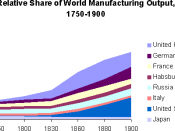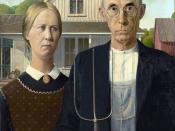Social Realism.
Social Realism is a trend that originated around the 1930's in the West. It developed as a reaction against idealism and the exaggerated ego encouraged by Romanticism. Consequences of the Industrial Revolution became apparent: urban centers grew, and slums proliferated on a new scale, contrasting with the display of wealth of the upper classes. With a new sense of social consciousness, the Social Realists pledged to "fight the beautiful art" - any style which appealed to the eye or emotions. They focused on the ugly realities of contemporary life and sympathized with working-class people, particularly the poor. They recorded what they saw ("as it existed") in a dispassionate manner.
Social Realism is a type of realism that is more overtly political in content. It is critical of society, marked by its realistic depiction of social problems. Social realism aims toward the not-so-lovely part of life. Its goal is not to amuse, but to show the observer the evils of poverty, immorality and
war. Social Realists mainly drew attention to the everyday conditions of the working classes and the poor, and were critical of the social structures that maintain these conditions. They believed that art should describe and express the people, their problems and their times.
Some of the Social Realism artists employed by the Federal Art Project chose to interpret the personal impact of the Great Depression with their art. They depicted economic hardships, emotional strains, and degrading situations in their style. Their artwork appeared as a form of social protest.
The example of an artwork that that contains characteristics of Social Realism is a sculpture created by Simon Gordon "Rural Couple with Child" (painted plaster, Illinois State Museum collection). In this study, the three figures are carved in a way that makes them appear very close...


